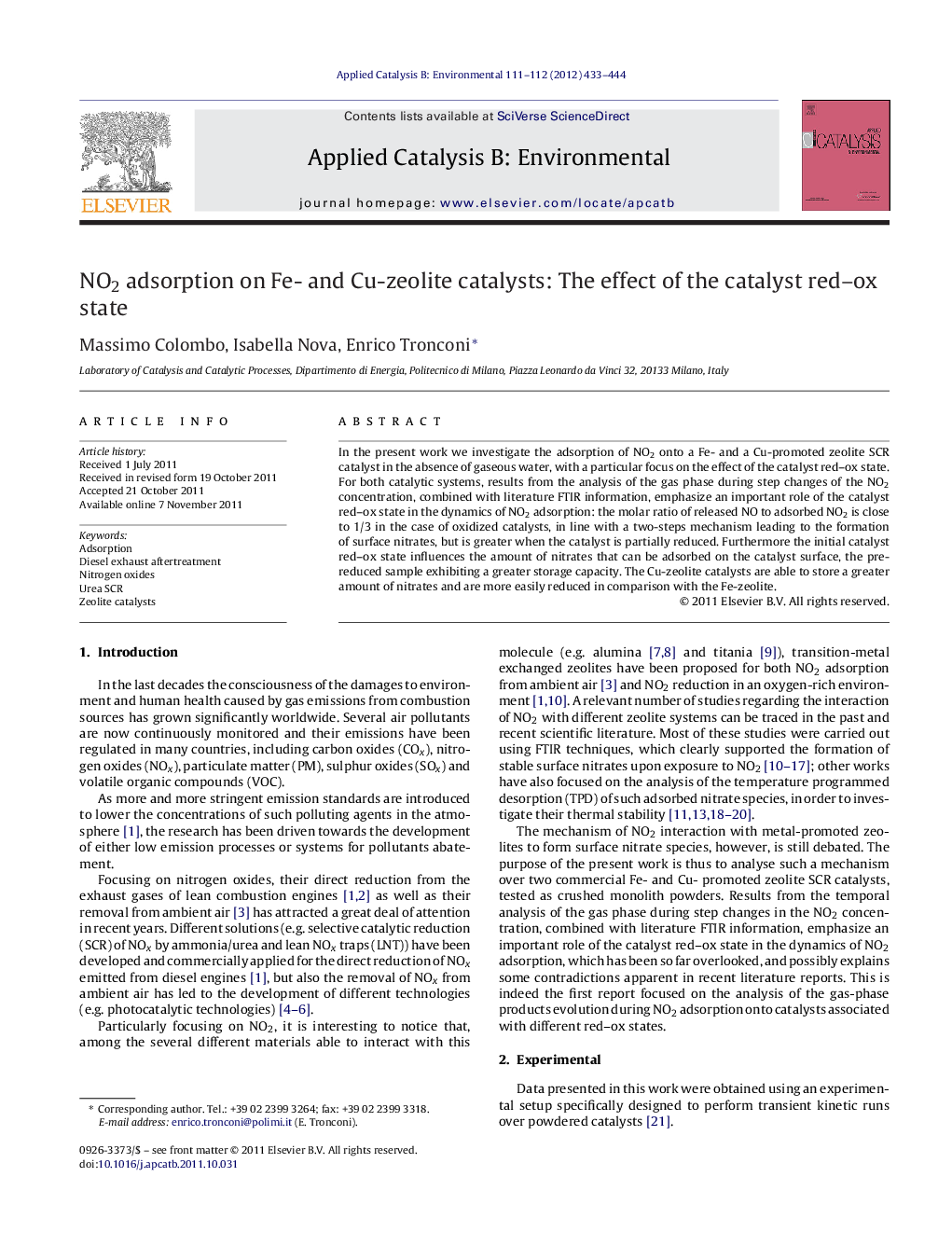| Article ID | Journal | Published Year | Pages | File Type |
|---|---|---|---|---|
| 46492 | Applied Catalysis B: Environmental | 2012 | 12 Pages |
In the present work we investigate the adsorption of NO2 onto a Fe- and a Cu-promoted zeolite SCR catalyst in the absence of gaseous water, with a particular focus on the effect of the catalyst red–ox state. For both catalytic systems, results from the analysis of the gas phase during step changes of the NO2 concentration, combined with literature FTIR information, emphasize an important role of the catalyst red–ox state in the dynamics of NO2 adsorption: the molar ratio of released NO to adsorbed NO2 is close to 1/3 in the case of oxidized catalysts, in line with a two-steps mechanism leading to the formation of surface nitrates, but is greater when the catalyst is partially reduced. Furthermore the initial catalyst red–ox state influences the amount of nitrates that can be adsorbed on the catalyst surface, the pre-reduced sample exhibiting a greater storage capacity. The Cu-zeolite catalysts are able to store a greater amount of nitrates and are more easily reduced in comparison with the Fe-zeolite.
Graphical abstractFigure optionsDownload full-size imageDownload as PowerPoint slideHighlights► Fe-zeolite: dynamics of NO2 adsorption influenced by the initial catalyst red–ox state. ► Oxidized sample: three moles of NO2 consumed for one mole of NO released. ► Reduced sample: significantly higher NO evolution during NO2 adsorption. ► The same qualitative results obtained also over a Cu-zeolite catalyst. ► NO2 first oxidizes the catalyst, then formation of nitrates occurs.
